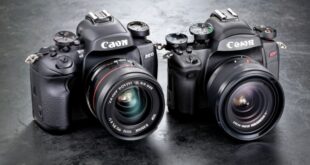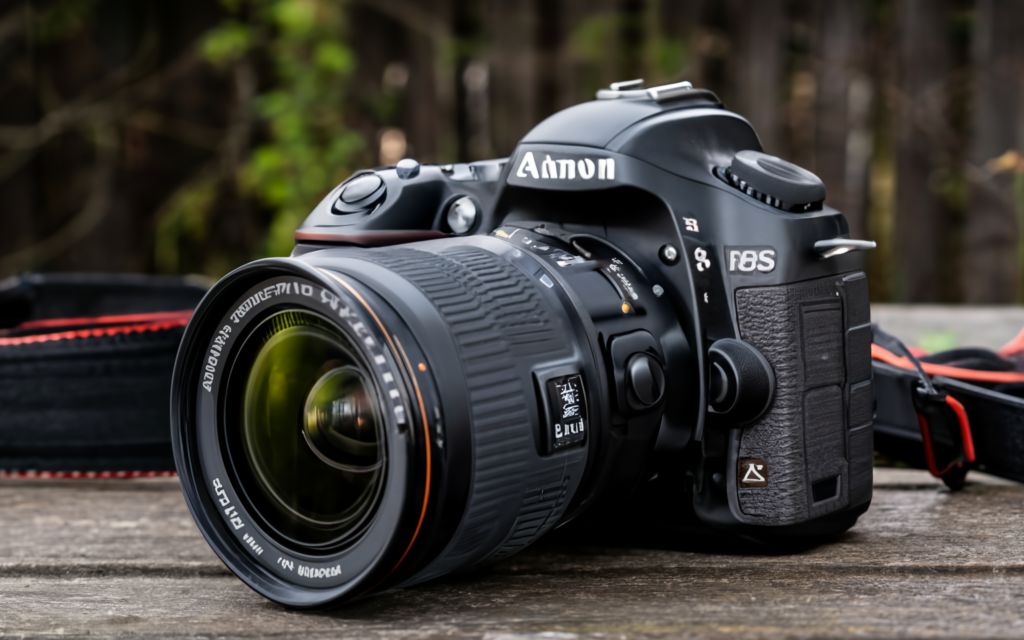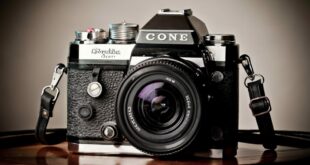📷 Capturing stunning portraits is an art that requires mastering the technical aspects of your camera. Your DSLR camera is equipped with a plethora of settings that can greatly enhance the quality of your portraits. In this article, we will explore the seven best DSLR camera settings for portraits and how they can help you capture breathtaking photos. Whether you are a professional photographer or an enthusiast, these settings will undoubtedly take your portrait photography to new heights. So, without further ado, let’s dive in and discover the secrets behind creating stunning portraits!
Introduction
When it comes to portraits, the settings you choose on your DSLR camera can make a significant difference in the final outcome of your images. Understanding and utilizing the best settings for portraits will allow you to capture the essence of your subject, emphasizing their unique features and expressions. In this introduction, we will explore the seven key settings that can help you achieve remarkable portraits.
The Importance of Aperture
Aperture, represented by the f-stop value, plays a crucial role in portrait photography. 🌟 A wider aperture (lower f-stop value) such as f/1.8 or f/2.8 creates a shallow depth of field, resulting in a beautifully blurred background that isolates your subject. This helps draw attention to your subject’s face, making it the focal point of the image.
The Power of Shutter Speed
Shutter speed determines the length of time your camera’s sensor is exposed to light. For portraits, a faster shutter speed helps freeze any movement, ensuring your subject remains sharp and in focus. ⏱️ A general rule of thumb is to use a shutter speed of 1/200th of a second or faster to eliminate the chances of blurring caused by subject movement or camera shake.
ISO for Optimal Exposure
ISO refers to the sensitivity of your camera’s image sensor to light. Choosing the right ISO setting is crucial for achieving a well-exposed portrait. 🌞 In well-lit conditions, it is advisable to use a lower ISO (e.g., ISO 100-400) to maintain image quality and minimize noise. In low-light situations, increasing the ISO (e.g., ISO 800-3200) allows you to capture properly exposed portraits without sacrificing image quality.
White Balance for Accurate Colors
White balance ensures accurate color reproduction in your portraits. By choosing the appropriate white balance setting, you can eliminate any unwanted color casts and achieve natural-looking skin tones. ☀️🌙 The Auto White Balance (AWB) option generally works well in most situations, but experimenting with different white balance presets or setting a custom white balance can help you achieve more creative results and enhance the mood of your portraits.
Focusing Techniques for Sharpness
Proper focusing techniques are crucial for capturing sharp and well-defined portraits. 🎯 Utilizing the autofocus (AF) feature of your camera can simplify the focusing process. Selecting the Single-Point AF mode allows you to focus precisely on your subject’s eyes, ensuring maximum sharpness. Alternatively, using manual focus gives you complete control over the sharpness and depth of field.
Utilizing the Exposure Triangle
The exposure triangle, consisting of aperture, shutter speed, and ISO, forms the foundation of photography. Mastering the interplay between these three settings is essential for achieving perfectly exposed portraits. ⚖️ By understanding how changes in one setting affect the others, you can maintain proper exposure while creatively controlling depth of field and motion blur.
Utilizing Picture Styles/Profiles
Picture styles, also known as picture profiles or film simulations, allow you to customize the overall look of your portraits. 🎨 These settings determine the contrast, saturation, and sharpness applied to your images. Experimenting with different picture styles can help you create unique and visually striking portraits that align with your artistic vision.
Advantages and Disadvantages of Best DSLR Camera Settings for Portraits
Advantages
1. Enhanced Subject Focus: By using the proper camera settings, you can ensure your subject remains in sharp focus, highlighting their features and expressions.
2. Beautiful Background Separation: The right settings can create a pleasing background blur, isolating your subject and directing the viewer’s attention to their face.
3. Accurate Exposure: Choosing optimal settings helps you achieve well-exposed portraits, ensuring no details are lost in shadows or blown out in highlights.
4. Natural Color Reproduction: Selecting the correct white balance setting ensures that your portraits display accurate and natural-looking colors, particularly skin tones.
5. Creative Control: Understanding DSLR camera settings empowers you to experiment and create unique portraits that reflect your personal style and vision.
6. Versatility: Once you grasp the various settings, you can adapt to different lighting conditions and environments, capturing captivating portraits in any situation.
7. Professional-Quality Results: By mastering these settings, you can produce high-quality portraits that rival those captured by professional photographers.
Disadvantages
1. Steeper Learning Curve: Understanding and effectively using all the DSLR camera settings can be challenging, requiring time and practice to master.
2. Technical Complexity: With numerous settings to consider, there is a risk of getting overwhelmed or making inappropriate adjustments, potentially leading to less-than-desirable results.
3. Increased Equipment Cost: Achieving optimal results may require investing in high-quality lenses, which can be expensive.
4. Time-consuming: Experimenting with different settings can be time-consuming, particularly when shooting in changing lighting conditions or with a moving subject.
5. Limited Depth of Field: While a shallow depth of field can be desirable for portraits, it may not always be suitable if you want to capture more environmental elements.
6. Noise in High ISO: When using higher ISO settings to compensate for low-light conditions, there is a risk of introducing noise or grain into your images, affecting overall image quality.
7. Customization Overload: The abundance of settings and options can lead to spending excessive time fine-tuning, potentially hindering your ability to capture spontaneous moments.
Complete Information about Best DSLR Camera Settings for Portraits
| Setting | Description |
|---|---|
| Aperture | Controls depth of field and background blur. |
| Shutter Speed | Determines the exposure time and freezes motion. |
| ISO | Adjusts the sensitivity of the camera sensor to light. |
| White Balance | Corrects the color temperature of the image. |
| Focusing Techniques | Determines the sharpness and depth of field. |
| Exposure Triangle | Interplay between aperture, shutter speed, and ISO. |
| Picture Styles/Profiles | Customizes the overall look and style of the images. |
Frequently Asked Questions (FAQ)
1. How do I achieve a blurred background in my portraits?
To achieve a blurred background, use a wide aperture (low f-stop value) to create a shallow depth of field. This will ensure your subject stands out against the blurred background.
2. Should I always use the Auto White Balance (AWB) setting?
While AWB usually works well in most situations, experimenting with different white balance presets or setting a custom white balance can help you achieve more accurate and pleasing colors in your portraits.
3. How can I capture sharp portraits of moving subjects?
Using a faster shutter speed will help freeze the movement of your subject, ensuring sharpness. Additionally, choosing a continuous autofocus (AF-C) mode can help you track and maintain focus on a moving subject.
4. What is the exposure triangle, and why is it important?
The exposure triangle refers to the relationship between aperture, shutter speed, and ISO. Understanding how changes in one setting affect the others allows you to maintain proper exposure while creatively controlling depth of field and motion blur in your portraits.
5. Can I achieve professional-looking portraits without expensive equipment?
Absolutely! While high-quality lenses can enhance the overall image quality, it is the understanding and skill in utilizing the camera settings that truly make a difference in capturing stunning portraits. Practice and master the fundamentals before investing in expensive equipment.
6. How do I avoid noise or grain in my portraits?
To reduce noise, especially when shooting in low-light conditions and using higher ISO settings, ensure proper exposure. Additionally, post-processing software can help in noise reduction while retaining detail in your portraits.
7. What picture style should I use for my portraits?
The choice of picture style depends on your personal preference and the mood you want to convey in your portraits. Experiment with different styles to find the one that resonates with your artistic vision.
8. How can I capture environmental portraits with a wider depth of field?
To capture more environmental elements in your portraits, use a smaller aperture (higher f-stop value) to increase the depth of field. This will ensure more of the scene is in focus.
9. Should I always rely on autofocus (AF), or is manual focus better?
Both autofocus and manual focus have their advantages. Autofocus simplifies the focusing process, particularly when shooting in fast-paced situations. On the other hand, manual focus gives you complete control over the sharpness and depth of field, making it ideal for more controlled and deliberate portrait photography.
10. What is the best lighting setup for portrait photography?
The best lighting setup for portrait photography depends on the desired aesthetic and the mood you want to convey. Natural light, artificial lighting, or a combination of both can all yield stunning results. Experiment with different lighting setups to find the one that suits your style and subject.
11. Can I adjust DSLR camera settings for black and white portraits?
Absolutely! While shooting in monochrome mode directly on your camera can provide black and white images, converting color images to black and white during post-processing allows for greater control and flexibility. This way, you can fine-tune the tonal range and emphasize different elements of the portrait.
12. How can I make my subject feel more comfortable during a portrait session?
Making your subject feel at ease and comfortable is essential for capturing authentic expressions and emotions. Engage them in conversation, provide clear instructions, and create a relaxed environment. The more comfortable your subject feels, the more natural and captivating their portraits will be.
13. Are there any specific camera settings for photographing children or pets?
Photographing children or pets requires patience and flexibility. Using a faster shutter speed to capture their quick movements, selecting the continuous autofocus mode, and getting down to their eye level can all improve your chances of capturing stunning portraits.
Conclusion
📸 Congratulations! You have now discovered the seven best DSLR camera settings for capturing breathtaking portraits. By understanding and utilizing these settings, you can elevate your portrait photography skills to new heights. Remember to experiment, practice, and embrace your own artistic vision to create unique and visually striking portraits that leave a lasting impression.
✨ So, what are you waiting for? Grab your DSLR camera, apply these settings, and embark on a captivating portrait photography journey. Unleash your creativity, capture stunning portraits, and let your passion shine through every click of the shutter.
Closing Statement
📝 As a disclaimer, it’s important to note that while the best DSLR camera settings for portraits can significantly enhance your photography, they are not the sole factors in creating stunning images. Your artistic vision, composition, rapport with your subject, and post-processing skills also play crucial roles in delivering remarkable portraits. Remember that these settings are guidelines, and the ultimate goal is to create images that inspire, evoke emotions, and tell powerful stories.
📷 Now, armed with this knowledge, go forth and capture the beauty of your subjects through the lens of your DSLR camera. Happy shooting!



